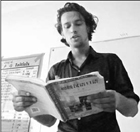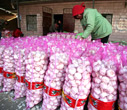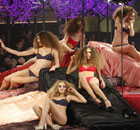highlights
Anguish lingers 25 yrs after India gas leak
(Agencies)
Updated: 2009-12-03 15:01
|
|
No Evidence of Pollution?
Authorities also have for years refuted claims that the water is contaminated, saying that various studies commissioned by the government have found no evidence of pollution.
However, the CSE report contradicts the government's findings, saying samples taken from around the factory site were found to contain chlorinated benzene compounds and organochlorine pesticides 561 times the national standard.
Samples taken as far as 3 km (1.9 miles) away from the plant were found to have toxic chemicals 38.6 times more than the standard. The report said there could be no other source of these toxins than Union Carbide.
Babulal Gaur, state minister responsible for relief and rehabilitation after the disaster denied this.
"There is no pollution and even if there was, it got drained away by the monsoons years ago," he told Reuters.
As dawn breaks over the slums of Jai Prakash Nagar, located directly opposite the plant, women brave the cool winter air to gather water at the communal taps with their buckets.
"You can smell it ... this water is poison and I hate giving it to my children to drink, but we are poor and have no choice," said 55-year-old Savitri, whose husband and son died a year after the disaster due to respiratory problems.
|
|








